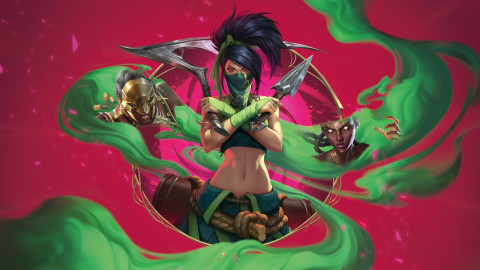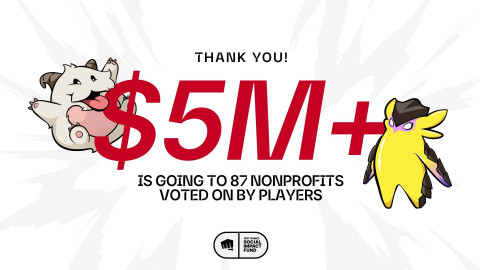
This article is part of The Makers of Faker. Click here to navigate and learn more about the series.
It makes sense that Lee "Faker" Sang-hyeok hails from South Korea. Like many legends in other disciplines, he emerged from the game's most celebrated crucible. Though very gifted, one can't ignore the training grounds that sculpted him.
On the surface, the dominance of Korea in League of Legends is curious. Despite its modest population of fifty million, Korea transformed into the epicenter for the world's most popular game. Other nations had equal or greater numbers of players and money, yet Korean teams maintained an air of near invincibility for the longest time.
Beyond training culture, the most common explanation for this is Korea's pastime in StarCraft: Brood War. The game gave them a head start. Over a decade, they built a robust infrastructure with adept management, insightful coaches, and a legion of gamers inspired by their predecessors. Such a system polished talents like Faker to shine even brighter.

Before the region's rise, many doubted Korea's potential, deeming StarCraft and League incomparable. It made sense to a degree. Other regions had much longer histories competing in MOBAs, like Defense of the Ancients and Heroes of Newerth — many early pros in League originated in those games. Shouldn't China, Europe, and North America have enjoyed their headstart with the game type a bit longer?
Korea had more experience with MOBAs than most realize, though. As StarCraft pros dueled in front of tens of thousands, lesser-known battles were underway in a game called Chaos. There weren’t as many players, as much money, or recognition, but the fire of the competition was bright. This underdog scene laid the foundation for future juggernauts. Many first-generation pros, including Go "Score" Dong-bin, Jang "MaRin" Gyeong-hwan, and even Faker, cut their teeth on this game, marking their initial jump into the MOBA world.
The success of Chaos players that went into League varies — Faker was an early teenager, and didn’t play in much actual competition. One of his teammates, though, was the greatest player ever. Someone that used their talents in that game to initially captain Faker, and help him win his first championship and Summoners Cup. This unsung hero of esports? Lee "PoohManDu" Jeong-hyeon.

A Suitable Name
Chaos stood as a variant of Defense of the Ancients, though they bore several distinctions. Key among these differences were the game's pace and Chaos's earlier translation into Korean. Through the 2000s, the game had a solid following, with players forming "clans" to battle one another, with NiceGameTV’s Chaos Clan Battle (CCB) emerging as the pinnacle of competition.
While supported by a notable broadcaster and minor sponsors, the infrastructure was makeshift. Teams lacked adequate backing, matches primarily unfolded online, and logistical issues drowned competitions in drama. Living up to its name, the scene swam in chaos. But in the midst of that storm came masterminds that changed Korean esports forever.
Chaos also describes the mind of PoohManDu — evident from his gaming streams. Legend has it that he sometimes juggled three games at once: Chaos, Tetris or Fantasy Masters, and a Windows Card Game. Playing with the name "Coach" on teams like iRis and CMaX, he in time became arguably the game’s greatest player. He won three CCB championships, an MVP award, and praise for his distinct gameplay.

Transitioning to League in the 2010s, fans were eager for the legend’s debut in the fresh MOBA scene. They'd have to wait — his mandatory military service delayed his entry. Discharging in 2012, he dove into competition with GSG at OGN The Champions Winter 2012-2013. Almost in an instant, the wild and clever mind seen in Chaos brought similar commotion to League.
No Stranger To Change
One claim to fame in Chaos was his innovation and willingness to take risks. He laughed at the idea of going with the meta. For example, he took several role-exclusive characters and excelled with them elsewhere, often to such effect that fans joked it led to their later nerfing.
He turned game mechanics, from macro strategies to item builds, into his experimental playground. While most shied away from the game's high-risk gambling items (items that could either be cost-effective or a complete waste of gold like Thunder Sword or Blood Sword), PoohManDu embraced them. In a legendary match, with his team's base nearly obliterated, the maverick risked another gamble buy, orchestrating a miraculous comeback.

Just as in Chaos, PoohManDu's early games at GSG featured unconventional champion choices like Lux and LeBlanc. Complete lunacy. They didn’t work out, but it was a taste of his Chaos swagger. His flair for innovation shone during the 2012-2013 NLB Finals. As Korea’s auxiliary league — elite organizations like KT Rolster and CJ Entus were competing. Facing the latter in the finals, PoohManDu and co. brought the series to Game 5. It was there that one of the most peculiar professional games occurred.
GSG — a team literally named after a family golf course — won against some of the biggest companies in esports. It’s a feat almost unparalleled in Korean League. Using Heimerdinger PoohManDu fast-pushed CJ Entus’ middle lane. The champion's turrets brought down CJ Entus' inhibitor, ten minutes in.
This wasn’t solo queue, a friendly scrimmage, or a throwaway pro match. This was the deciding game of the world’s best region's second-biggest competition. “Watching the match was unbelievable,” personality and host Daniel "dGon" Gonzales told Inven Global. “I think everyone was Pastrytime — trying to piece together what was happening and theorycrafting while also appreciating the amount of pure confidence to pull this out in a Game 5 finals.” That's how PoohManDu played.
SK Telecom T1's head coach, Kim "kkOma" Jeong-gyun, a former Chaos player himself, saw the spark in PoohManDu and convinced him to be the team's support. Despite his relative inexperience in League—though he had achieved a good amount of success playing ranked on the North American server—kkOma rolled the dice.

His first split with them wasn't earth-shattering, but he continued his weird reputation. He found success with offbeat picks like Mordekaiser and helped popularize Fiddlesticks. His innovative build strategies redefined some champion’s play. The team clinched third place in their first tournament, setting the stage for their ascent.
First Over Flash
PoohManDu's team synergy in Chaos was as notable as his innovation. He was more than the game’s best player. Together with Yoon "Malfurion" Do-kyung, they became an iconic duo, boasting twelve CCB appearances, three championships, and countless memorable moments. Teamwork was in his DNA.
PoohManDu was willing to take on almost any role to help his team win. He actually played in a more supportive function in Chaos (Chaos doesn’t have traditional positions), but could hard-carry on higher damage characters when needed. While capable of standout moments, his team's success was always paramount.

When Inven Global asked Faker about his contributions, he noted that “he helped the team in many different ways.” While stars like Hong "MadLife" Min-gi and Cho "Mata" Se-hyeong grabbed the spotlight, PoohManDu excelled with a style reminiscent of his Chaos days.
"He was very good at playing his role, in that he did what a support is supposed to do,” former-OnGameNet commentator Erik "DoA" Lonnquist told Inven Global. “He knew the exact right times to be a playmaker and knew the right times to hold back. When a support of his ability is in the League, usually, you'll see them doing a lot of big-play stuff. MadLife is a good example of that. He was all about the big plays — which is great. There's a little bit of risk attached with that sometimes, but that was generally the focus. Whereas, PoohManDu was capable of making those plays, but focused more on setting his teammates up for doing what they do best. You always knew he was capable of it, but he was so good at passing over opportunities to showboat in favor of getting a solid win.”
He could blitzkrieg with Heimerdinger and make Thresh's hook seem magnetic. His main focus, though, was facilitating his team — especially Chae "Piglet" Gwang-jin. Faker’s third-place finish in his first tournament wasn't much his fault. Throughout the event, most teams tried to shut him down — their semifinal opponent defeated T1 by focusing on their side lanes instead. Following that, PoohManDu made sure it would never happen again.

He and Piglet (dubbed the “Hundred Acre Lane”) became the best bottom lane in the world at their peak. Instead of risky struts, he always put Piglet in a position to succeed. His aggressive laning helped win bad matchups, his team fight navigation helped Piglet survive surefire deaths, and his vision control with Bae "Bengi" Seong-woong kept them as secure as ADX Florence. Even on Faker's less stellar days, Piglet was poised to maintain T1's momentum.
“His Zyra was memorable, because he and Piglet beat me and Uzi a lot during the laning phase. At that moment, I always used Thresh, Annie, and Sona to initiate, but after playing with them, we knew that there's a playing style called poke. We didn’t know poke at all at that moment,” reminisced former-Support Wong "Tabe" Pak-kan to Inven Global about the 2013 Worlds Finals. “I still admire him.”
PoohManDu also contributed to the team in ways less visible to fans. He loved his weird picks, but his mastery of mainstay champions like Nami made him a strong draw during draft phases. He was an important presence in communications — one of the primary leaders of the team — a quality that extended out of game.
“He was kind of a calming presence on the team, too. I have heard when things would get a bit tense, he'd be able to calm people down. And that was kind of his nature,” DoA later added. Impact told Inven Global he was like a “nice older brother”. That in itself was impressive, given the cultural age distinctions in Korea. Impact, though, praised his willingness to joke around with them — always adapting to what the team needed.

It was that collegiality that allowed T1 to take over the world. They boasted an elite bottom lane, refined shotcalling, and a cohesive team bond. T1 went on an exceptional streak of dominance. They went on to win both Champions Summer 2013 and the Season 3 World Championship, maintaining an unbeaten record in Champions Winter 2013-2014. While Faker’s play was already the best the world had seen — his status as an icon came also from the fact that he spearheaded the best team in the world. A lot of that team’s success belongs to a man who had only recently picked the game up — one that less than a year ago was serving in the military.
Mighty In Misery
PoohManDu thrived in difficult conditions — his road to glory in Chaos had a lot of potholes. A perfect example of this was during the eighth CCB. During one stage, PoohManDu faced a dilemma: he was stuck in class. With the match underway and the school's IP blocking game access, a professor, known to be a Chaos fan, intervened. Granting him access to a functional computer, PoohManDu played and clinched a win, expressing his gratitude with a "Thank you, Professor" in the game chat.
Another famous instance was in the third CCB final. It stands out not just as PoohManDu's inaugural championship but also for its absurdity. Unexpected rainfall at the outdoor venue left many doubting the game's continuation. PoohManDu's team clinched the initial game against reigning two-time champions, almost sealing a victory in the following decisive match.
That's when they got shut down. No, literally. As they neared victory, an abrupt power outage shut down their computers. This unfortunate event forced a rematch, where their opponents triumphed. While today's esports pros lament ping and glitches, PoohManDu's team grappled with literal blackouts. Yet, despite these setbacks, they triumphed through both rain and electrical failures.

PoohManDu was relentless, pursuing glory against all odds, reminiscent of a marine battling brutal conditions. This resilience was evident when, despite his chronic health challenges from childhood electrocution, he continued to dominate in League. The suffocating chest pain, at times causing him to fear for his life, briefly subsided during his military stint but resurged in his pro career. Yet, his dedication to his team stopped him from stepping back.
That's right. All his innovation, trophies, and fantastic play happened in the face of harsh health problems.

As T1 came off their undefeated run, PoohManDu saw it as a good opportunity to step down and focus on his health. Rising to the top, he boasted multiple championships, two seasons of KDA awards, and a top-ranking in MVP points at Champions Winter 2013-2014. He was close to the best support in the world. And from this pinnacle, he hinted at retirement online, suggesting he'd step aside if a worthy replacement emerged.
It lasted a few weeks.
Likely due to the team's struggles, PoohManDu returned earlier than expected to the next tournament. After a year without rest, his rapid decline, while understandable, was stark. He became one of the worst supports in Korea and was unable to be as effective in all the areas he used to excel. Except for Faker, most of the team followed in PoohManDu's footsteps (off of a cliff). They disappointed fans throughout the year and failed to qualify for Worlds. And though PoohManDu had once elevated Faker, he now seemed a weight pulling him down. He retired soon after.

Despite his swift fall from grace, PoohManDu's legacy shouldn't be overshadowed. Often overlooked by League and Faker fans, his underrated contribution to esports is nothing short of criminal.
Lost Legacy
No matter what, he's won. Yes, it’s a shame his health problems and older starting age prevented him from doing more. It's a shame he came at the time of playmaking greats like MadLife and Mata, and never was considered the clear best support in the world. A man of his talent could’ve been one of the greatest supports ever. But though he was a flash-in-the-pan, he lit up the world — his short but bright career compares to figures like basketball's Bill Walton or football's Bo Jackson.
Furthermore, his groundbreaking contributions to Korean League, through his work in Chaos, deserve eternal recognition. While StarCraft laid the cultural foundation for Korea's esports dominance, it's noteworthy that most elite League players didn't transition from StarCraft. They came from Chaos. It was this movement of underground netizens, with PoohManDu at the top, that laid the groundwork for legends like Faker to emerge and dazzle. Without trailblazers like PoohManDu stretching the limits in Chaos and building an experienced player base, Korea's rapid ascendancy in League, and Faker's meteoric rise, might have taken longer. His legacy is woven into the fabric of Korea's esports history.

Of course, this strays into speculation. We’ll never know what Faker and the Korean scene would look like without Chaos. But there's more concrete (and poetic) evidence on August 31st, 2013 — one of the most important days of Faker’s career. It was the day of the Finals of Champions Summer 2013: Faker’s first championship, and the day he became an international superstar. Everyone remembers his famous Zed duel in Game 5 that shook the world. What many people forget, is that the play might’ve never happened without the old dumpling in the bottom lane.
T1 was very close to losing that series. The KT Rolster Bullets, a team renowned for their strategic mid and late-game prowess, dominated the first two games. T1 put together a strategy in Game 3 that relied on knocking the Bullets out as soon as possible before the Bullets could suffocate them.
The pressure was on. Their strategy was smart, but if anyone flubbed it, they were out. Faker couldn’t be the only carry — everyone needed to show up for them to escape defeat. They were down 0-2 against the most strategic team in the world. To add to the drama, rain poured down.
Could there be a better situation for PoohManDu?
In Game 3, PoohManDu's signature style, reminiscent of his time in Chaos, came out to shine. Like in Chaos, his use of Zyra dominated and innovated (not the champion itself, but how he played it) — seen as one of the reasons for her nerfs that would occur later on. Like in Chaos, he provided perfect vision, and helped get Piglet an early advantage that blossomed him through the rest of the game. Like in Chaos, he took weight off of his team in this needed knockout punch: scoring First Blood, and even grabbing a miraculous triple kill in a 2v3 gank.
And like in Chaos, as the storm calmed, PoohManDu came out victorious.
Have any player there lesser than PoohManDu — a man tempered by Chaos — and there most likely would not have been a Game 5. The Bullets could have very easily won the third game, and swept the series. But in great part because of him, Faker secured the Champions trophy, the Summoner’s Cup, and the legendary Zed outplay. He was instrumental in T1's transformation into one of the game's most formidable teams. While Faker might have still risen to become the greatest League player, his old support certainly hastened it.

The dominance of the Korean scene owes much to Chaos. Similarly, in many ways, PoohManDu's unique blend of talent, humility, and determination accelerated Faker's rise to dominance. That should be his legacy.
-

I write. I rap. I run. That’s pretty much it.
Sort by:
Comments :0





